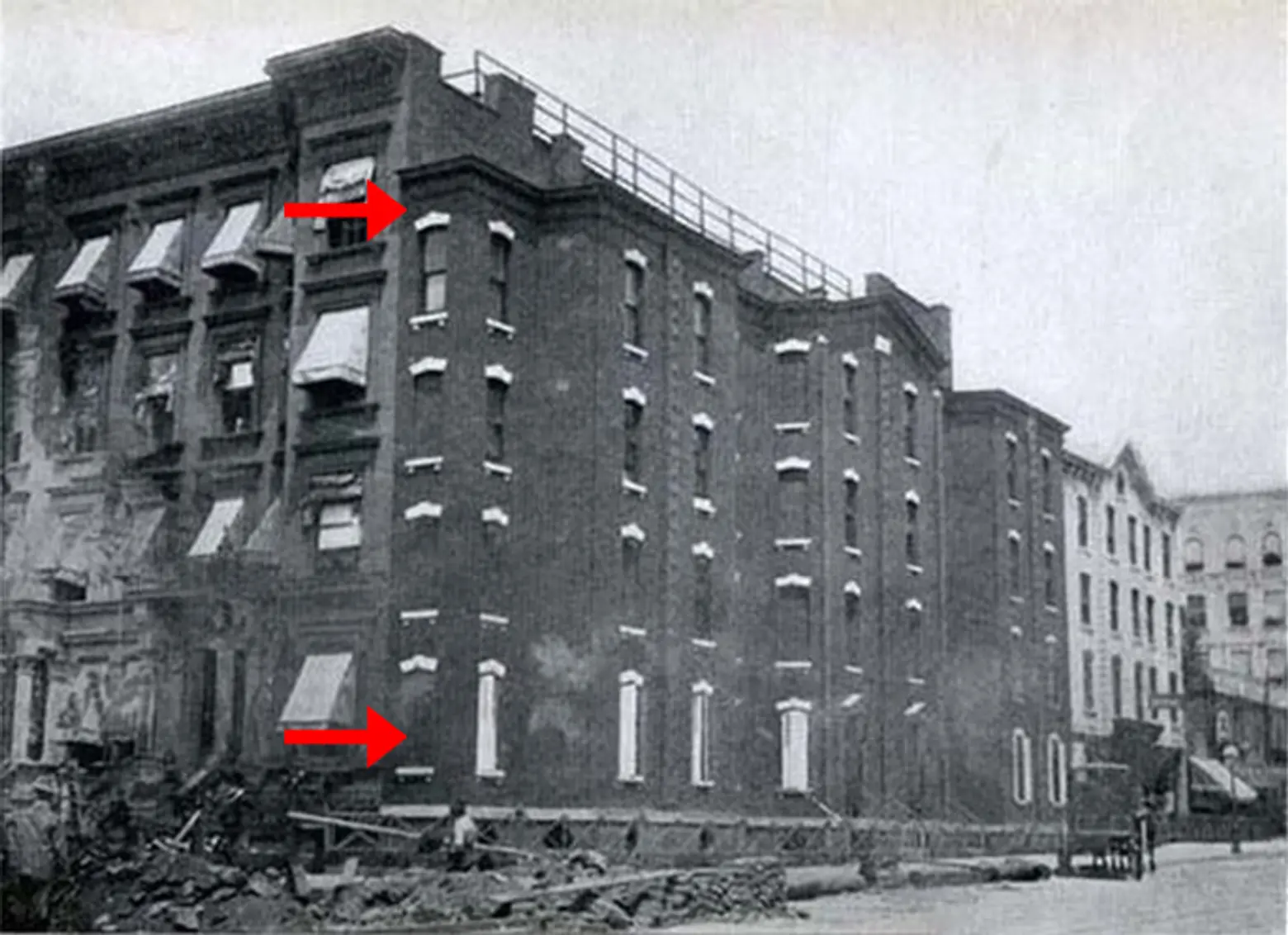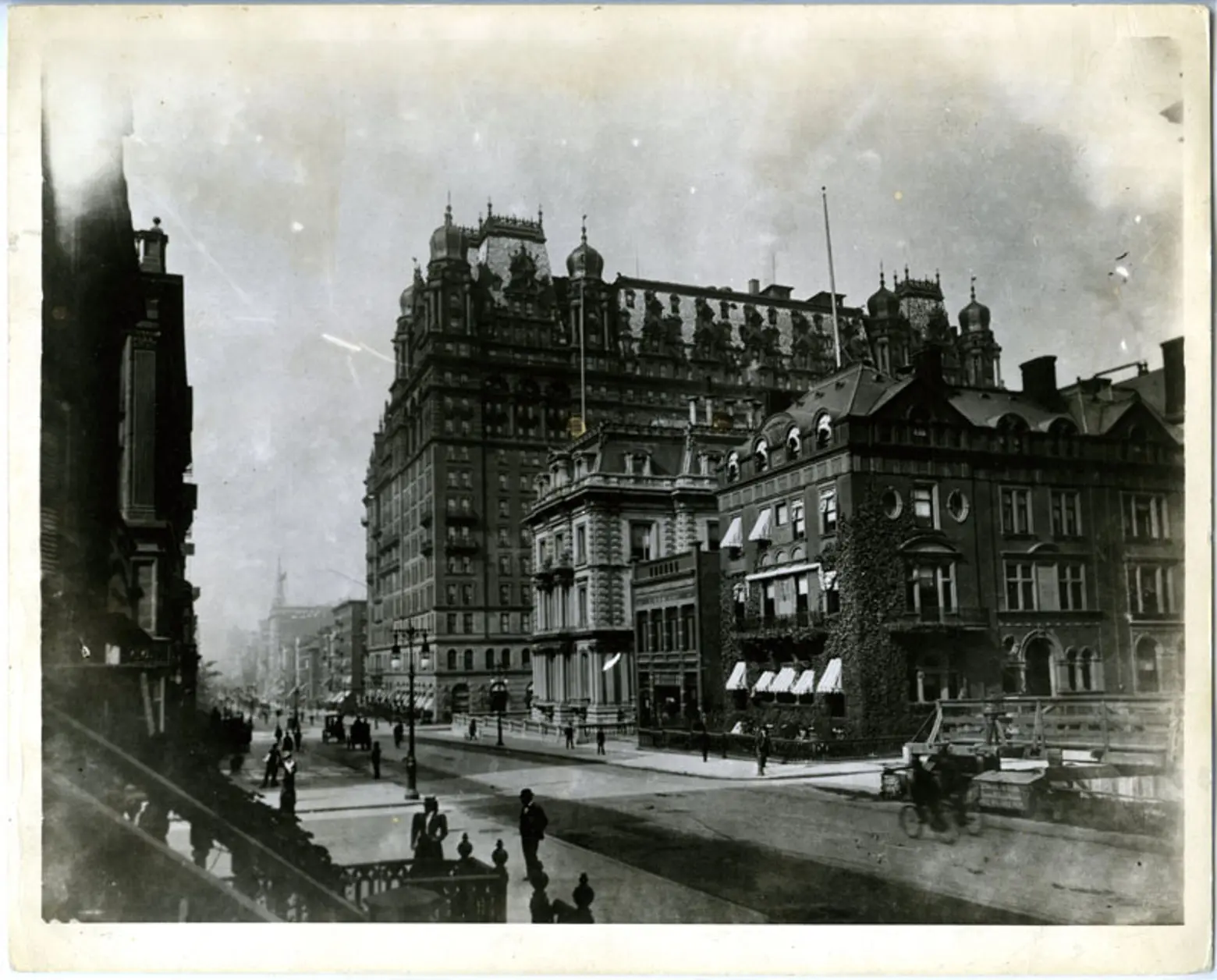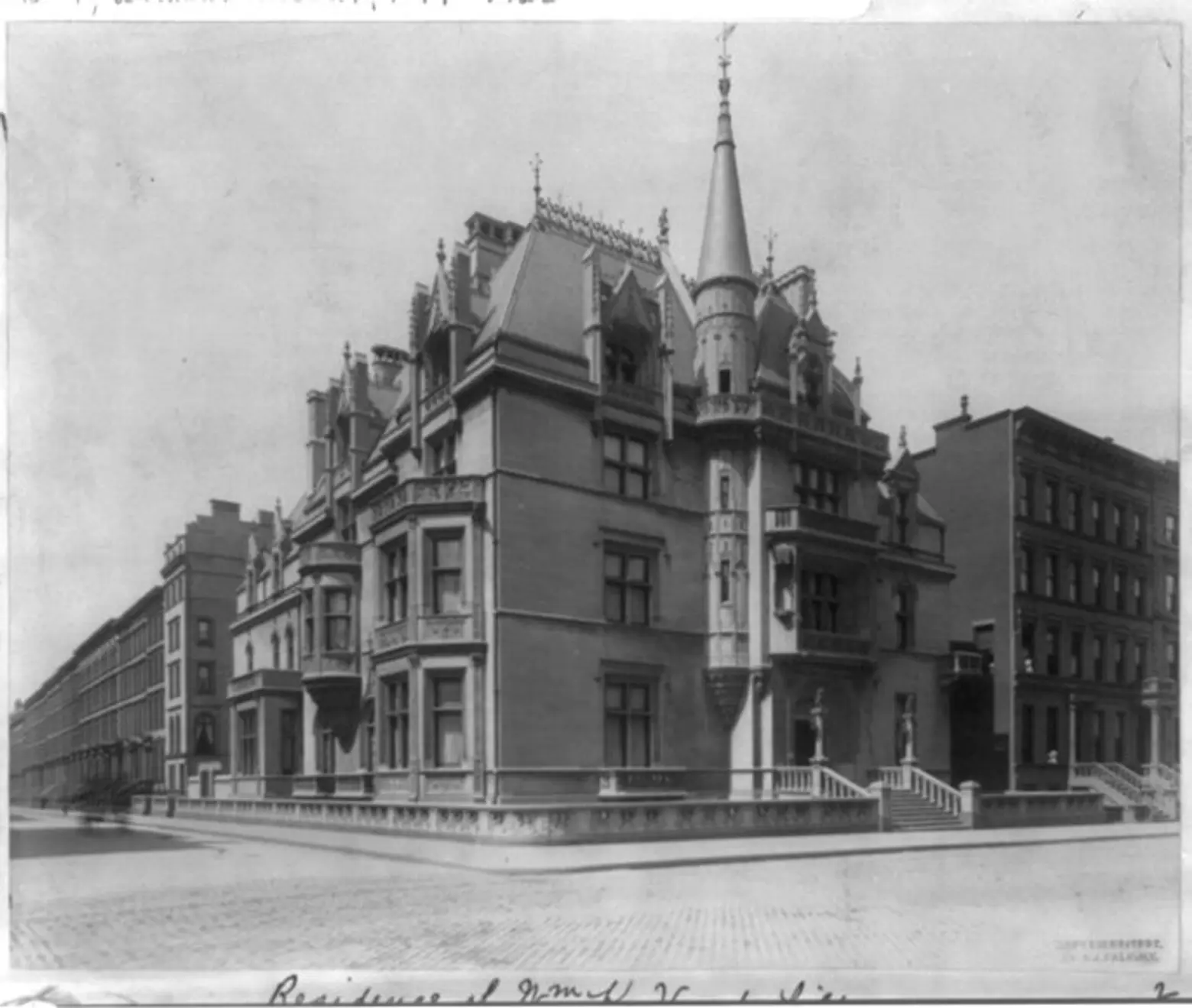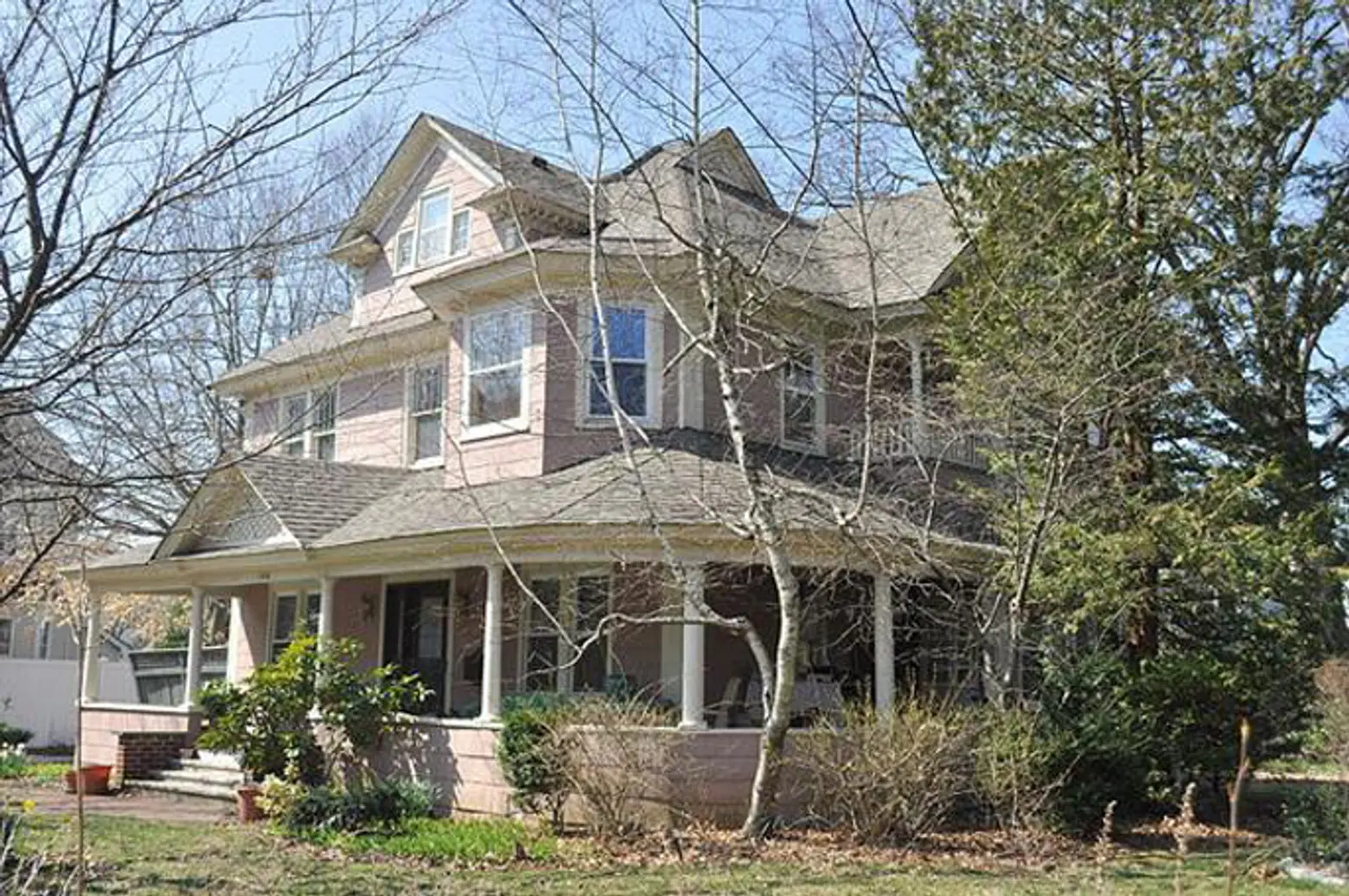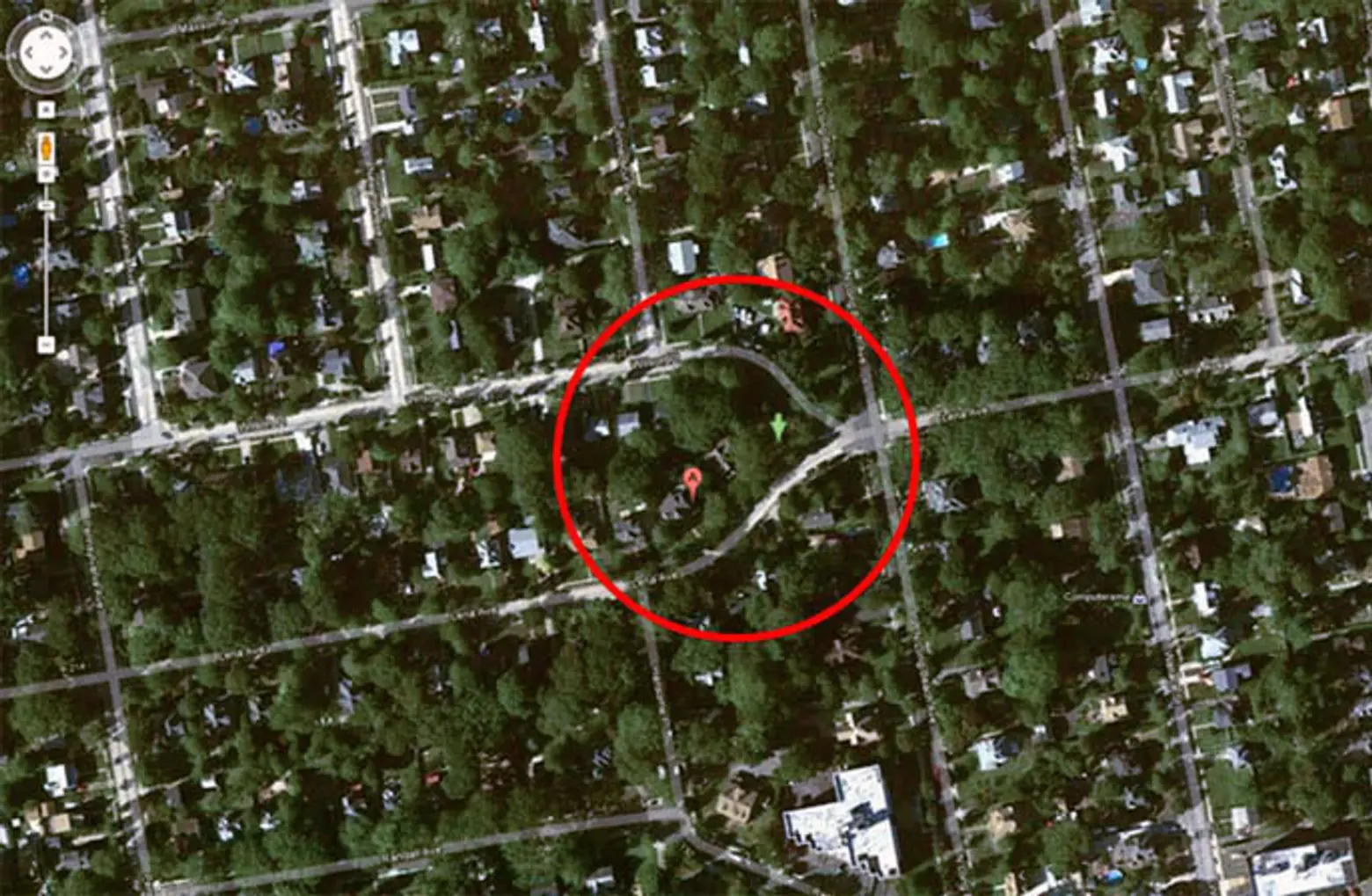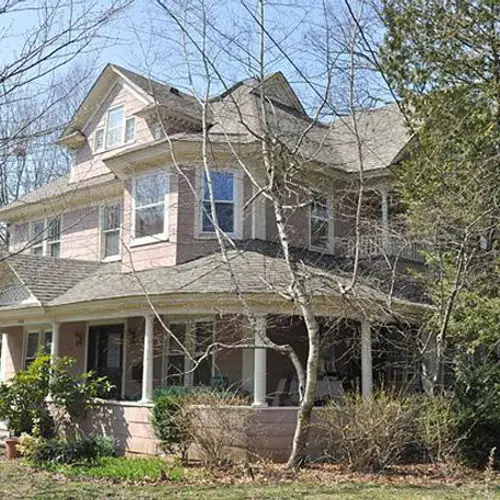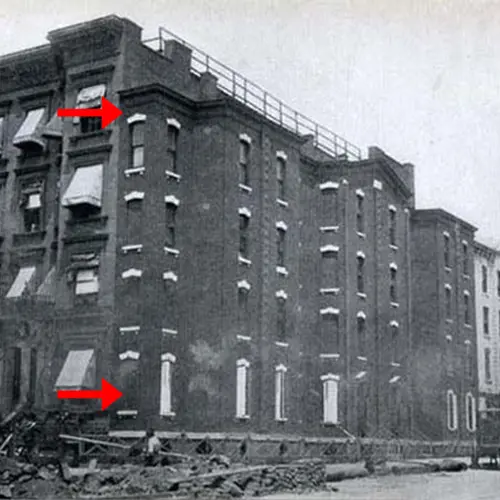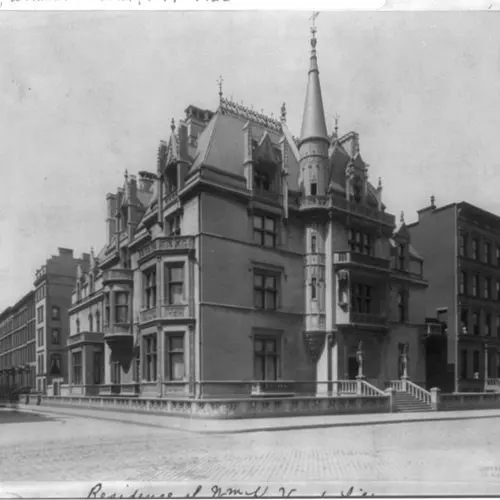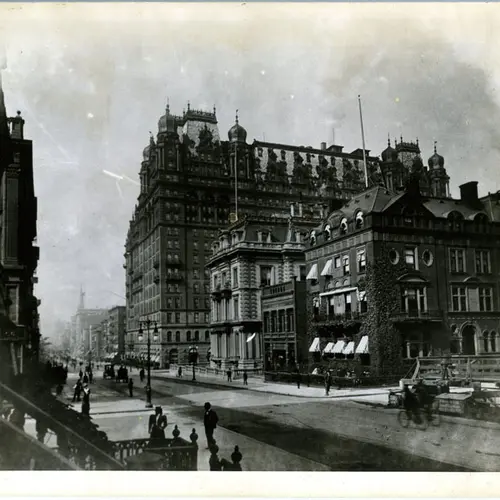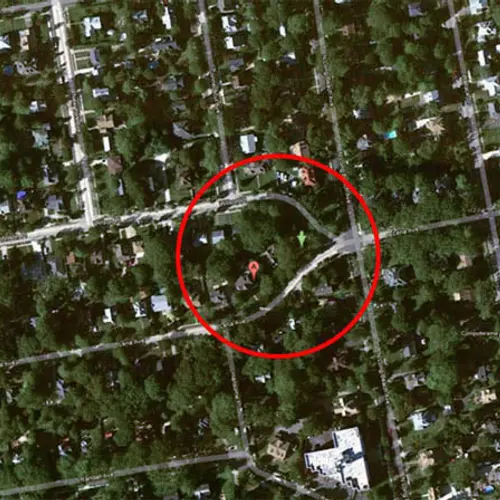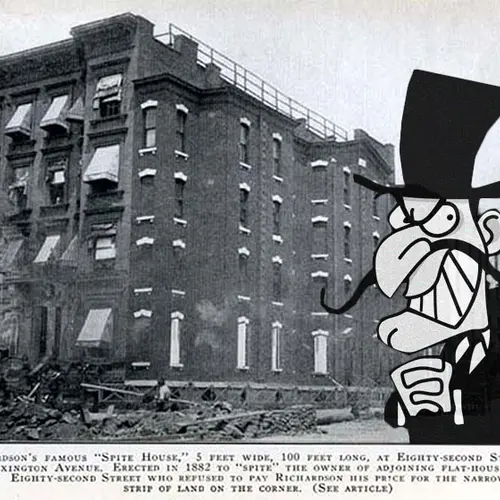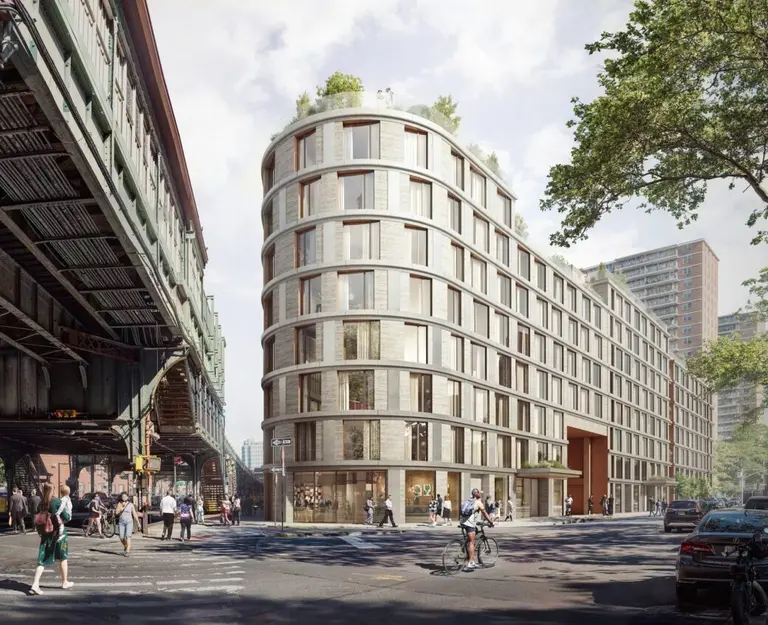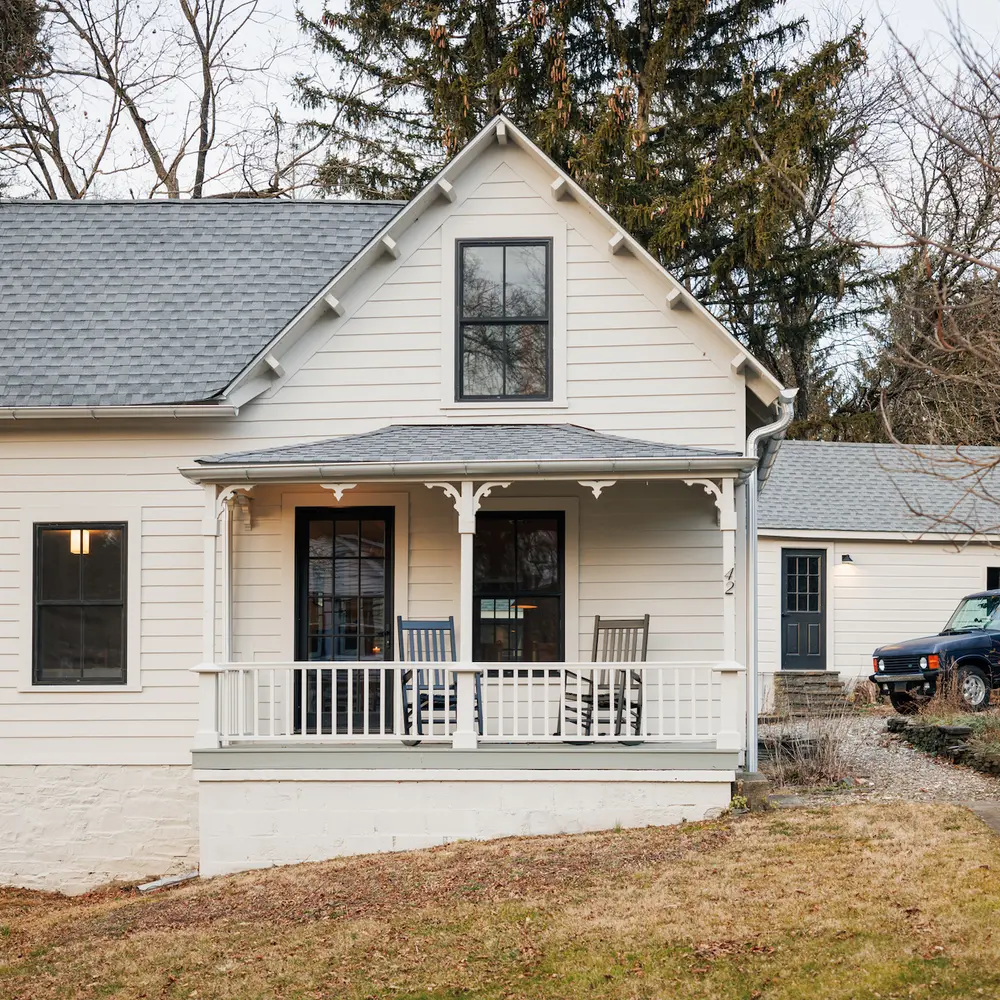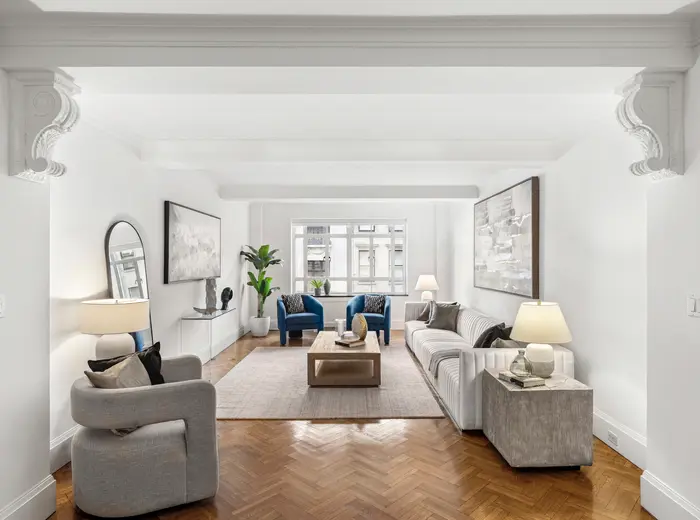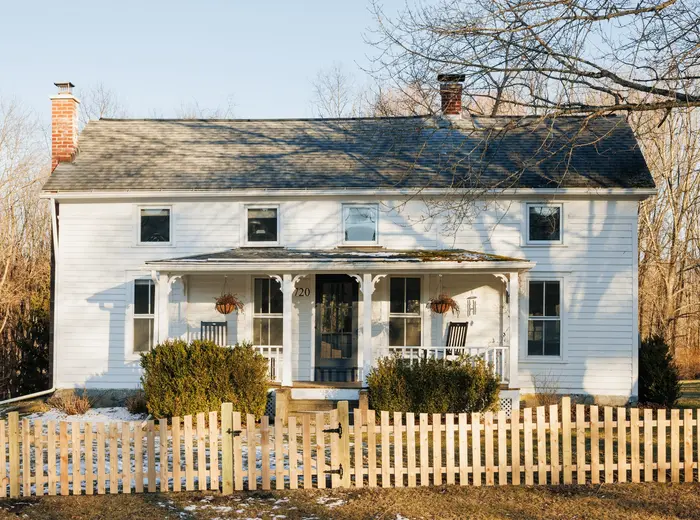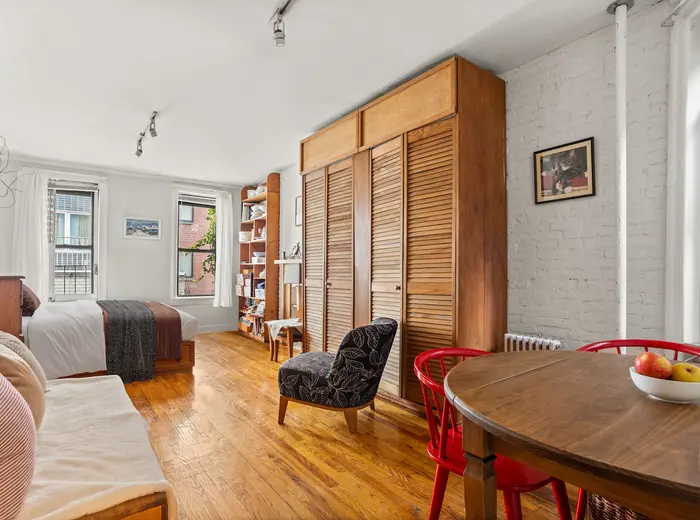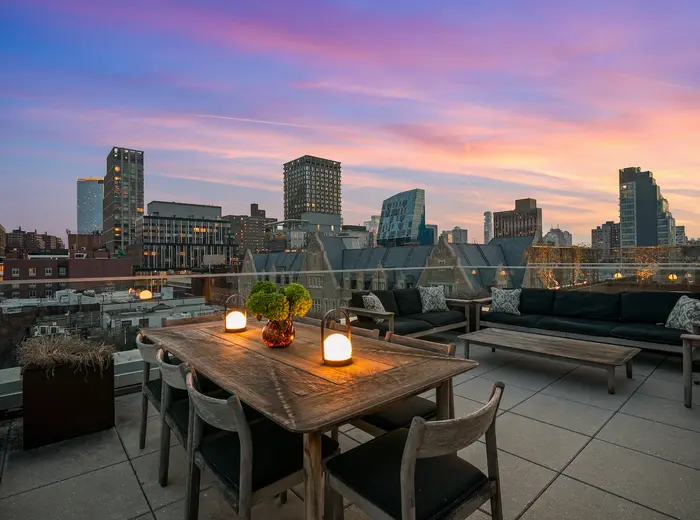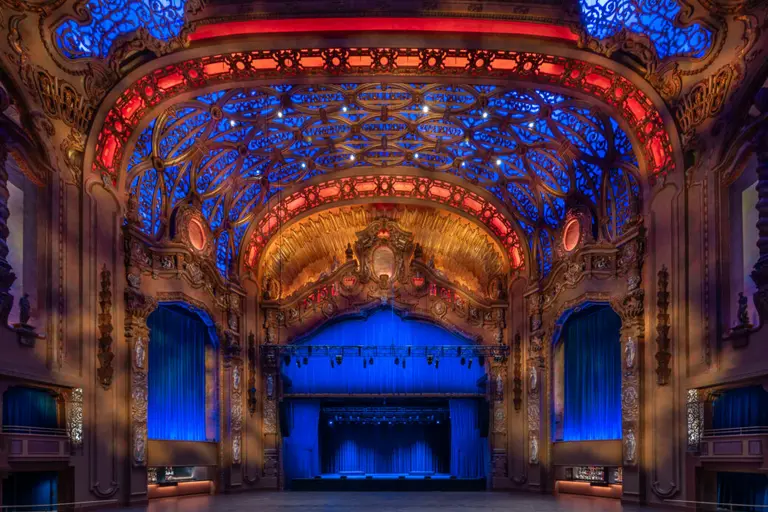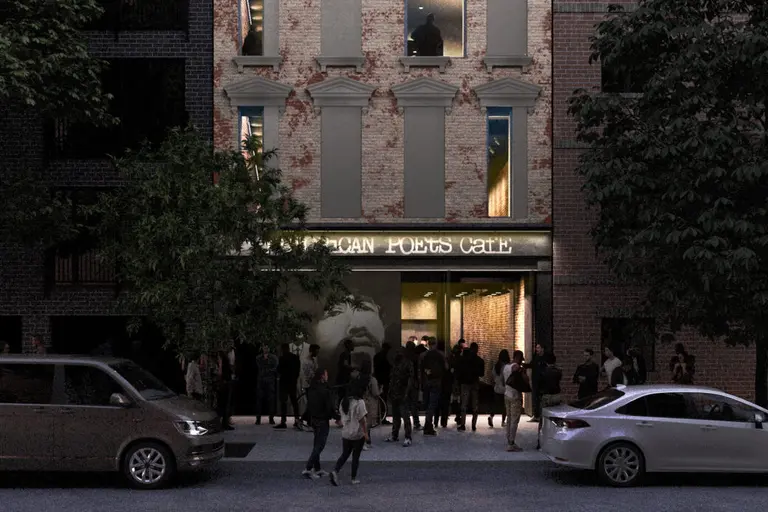Revenge Architecture: Four New York Buildings Constructed out of Spite
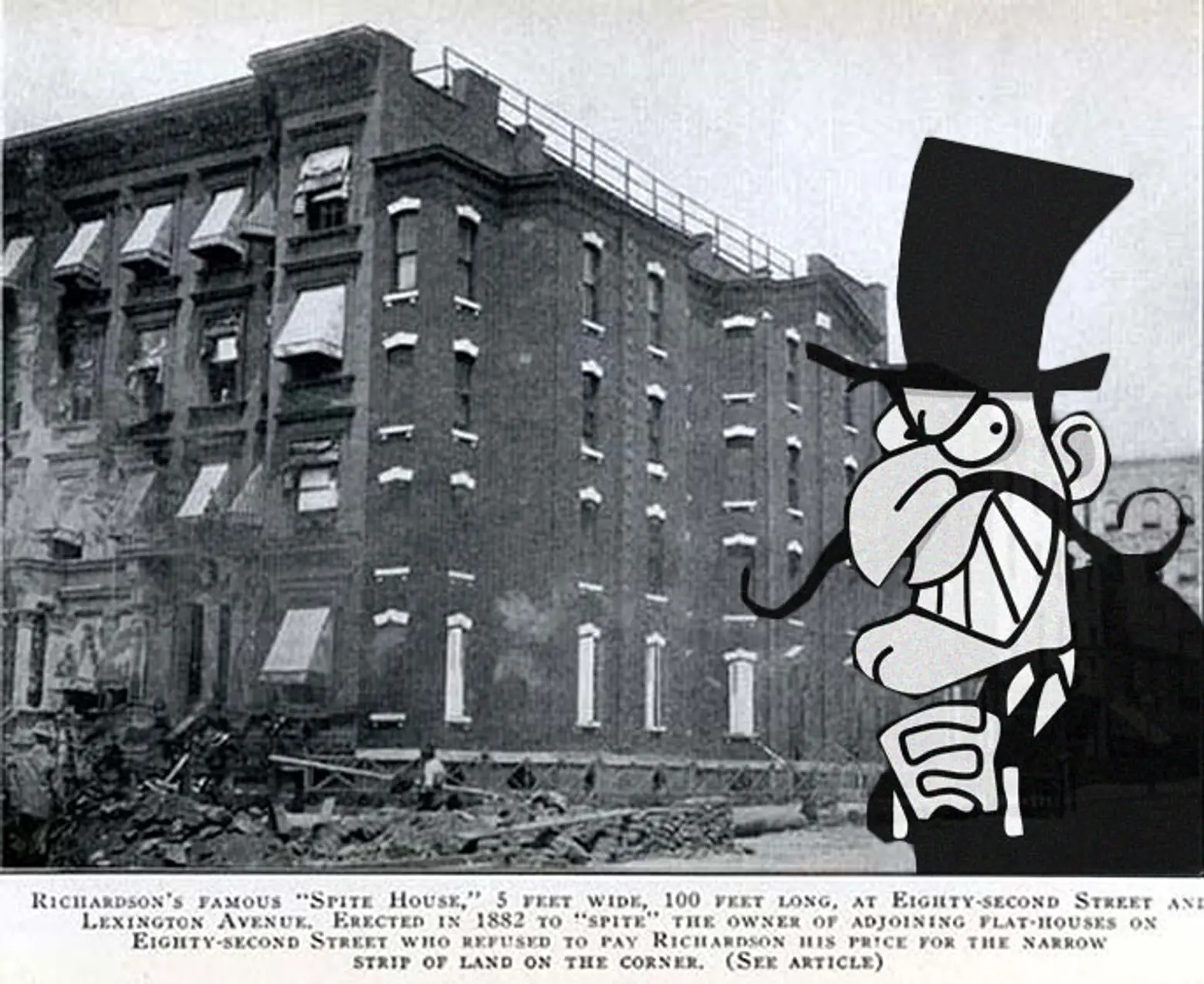
We don’t have to love our neighbors, but life is most certainly less stressful when they’re easy to get along with. But as we all know, this is not always the case, and in several instances in New York’s turbulent history, a friendly local feud has resulted in some rancor constructions—or what’s better known today as “spite houses.”
According to Wikipedia, a spite house is a building constructed or modified to irritate neighbors or any party with land stakes. While this definition illustrates the basic concepts of the act, it doesn’t quite capture the vengeful spirit that powers it. With that said, we’ve perused the archives and put together a quick history lesson featuring a few famous examples of spiteful architecture that’s risen in New York over the past centuries.
Richardson Spite House ↑
This photo, of the corner of Lexington Avenue and 43rd Street, was taken in the late 1800s and memorializes one of the more famous constructions of spite. As the story goes, a clothier wanted to construct an apartment building that extended almost all the way to Lexington Avenue. Unfortunately for him, however, a small strip of land measuring approximately 104 feet long and 5 feet wide was owned by a man who went by the name of Joseph Richardson. Richardson was already considered a reputed miser, so it wasn’t totally out of character when the man refused to sell his land to the ambitious developer. In lieu of Richardson’s refusal, the developer went ahead with his plans anyway assuming there was little need for concern considering the size of the area in question. Much to his surprise however, Richardson vengefully built a 104-foot-long, 5-foot-deep building that completely blocked the new apartments.
William Waldorf Astor’s Spite Mansion and Fence ↑
The Gilded Age never seems to fail us in the family drama department, and the William Waldorf Astor spite mansion and fence episode is no exception. William Waldorf Astor lived next door to his aunt Caroline Webster Schermerhorn Astor on the same block that is now occupied by the Empire State Building. Unfortunately, the two family members did not get along, and in ill will toward their relationship, William decided to replace his home with a hotel—the original Waldorf Hotel. There was never a literal fence, but the side of the building facing his aunt’s abode had no windows, making the building more fence-like and spiteful than necessary.
William K. Vanderbilt Mansion ↑
The Astors didn’t only inspire spiteful architecture in their own family; it also extended to other New Yorkers within their social circle. Case in point: The William K. Vanderbilt Mansion, a grandiose home William’s wife Alva commissioned from Architect Richard Morris Hunt. The home was built in 1878 in a French-Renaissance and Gothic style and was affectionately referred to as the Petit Chateau. The construction of the home was part of Mrs. Vanderbilt’s efforts not only to impress the Astors, but also to break into the 400 society in a time when new money was still looked down upon.
According to the book “Fortune’s Children” by Vanderbilt descendant Arthur T. Vanderbilt II, architect “Hunt knew his new young clients very well, and he understood the function of architecture as a reflection of ambition. He sensed that Alva wasn’t interested in another home. She wanted a weapon: a house she could use as a battering ram to crash through the gates of society.” The interiors were decorated from trips to Europe, with items from both antique shops and from “pillaging the ancient homes of impoverished nobility.” The facade was of Indiana limestone and the grand hall built of stone quarried from Caen, France.
However, Alva’s plans were bigger than just a fancy house; she also threw an extravagant ball where she invited not only the usual 400, but also 1,200 of New York’s finest— all except for Mrs. Astor. In response, Mrs. Astor ended up calling on Alva’s new home to secure the proper invitation for herself and her daughter.
In the end, Alva’s efforts paid off. The New York press was head over heels about the event and the Times reported that “Mrs. Vanderbilt’s irreprochable taste was seen to perfection in her costume.” The New York World went on to say that it was an “event never equalled in the social annals of the metropolis.” With the hefty price tag of $250,000 (equivalent to $6.5 million in today’s market), the home secured the Vanderbilts’ place in New York society.
Unfortunately, in 1926, the mansion was sold to a real estate developer and replaced by 666 Fifth Avenue where Zara currently occupies the retail floor.
Freeport Spite House ↑
Freeport New York, located about 30 miles outside of New York city, is home to another infamous spite house. This dwelling was built in the 19th century by a New York developer in protest to the town’s plans to lay the city out in a grid. Virtually overnight, the Victorian house was erected on a triangular piece of land at the corner of Lena Avenue and Wilson Place. Today the home still stands and is currently occupied.
Know of any others? Tell us about them in the comments below.
RELATED:
